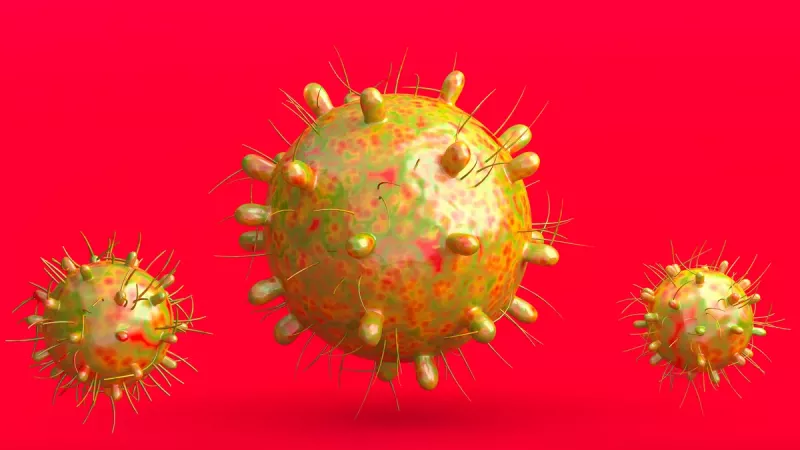What's happening
The omicron variant of COVID-19 keeps changing, creating newer, more contagious variants. BA.5 seems to be the most contagious version to date and is causing most current COVID-19 cases in the US
Why it matters
BA.5 is causing more reinfection in people who already had COVID-19, including earlier versions of omicron. It's also evading immunity from the vaccines.
What it means for you
BA.5 doesn't appear to be causing more severe disease than earlier variants, and the vaccines are still effective at preventing severe disease and death. To stay protected, get the booster shots you're eligible for and wear a mask in public.
BA.5, the newest version of COVID-19's omicron variant, constitutes about 78% of current COVID-19 cases, according to an estimate by the US Centers for Disease Control and Prevention. Because of BA.5's makeup, people who already had COVID-19 are most likely not as protected as they would've been if facing an earlier strain, federal health officials said last week at a White House COVID-19 Response Team briefing.
This could explain another rise in COVID-19 cases, and more importantly a rise in hospitalizations. While the current seven-day average of new hospitalizations is rising slightly week over week, CDC Director Dr. Rochelle Walensky said, the rate has doubled compared with early May.
At the meeting, Dr. Anthony Fauci, the president's chief medical adviser, explained how the virus that causes COVID-19 keeps mutating, and the virus "essentially bumped one variant off the table after the other," which has led to a long parade of increasingly contagious subvariants of omicron. The mutation that's now responsible for the majority of COVID-19 cases is BA.5, an extremely contagious version of omicron.
Though the newest subvariant "substantially" evades antibodies from prior infections and vaccines, Fauci said, being up-to-date with a booster (or two boosters, if you're 50 or older) is still protective against severe disease and death. That's because research shows that BA.5 doesn't lessen the protection against severe disease compared with earlier versions of omicron. And while not much is known about its clinical severity compared with earlier subvariants of omicron, it doesn't appear to be causing more severe disease, Response Team officials said.
In an effort to target the most relevant strain of virus causing COVID-19, vaccines based on the BA.5 subvariant (along with BA.4) will be the first choice for COVID-19 booster shots this fall. Response Team Coordinator Dr. Ashish Jha encouraged everyone to get a booster if they're eligible and haven't opted for one yet, because it won't affect their ability to get vaccinated come fall or winter when new boosters start rolling out to Americans. What's more, COVID-19 treatments, including Paxlovid, are predicted to be effective still, and the US Test to Treat clinics are still up and running to connect people most at risk with prescriptions for treatments if they need them.
Do the at-home tests detect BA.5?
Right now there's no reason to suggest that the at-home rapid COVID-19 tests (a few boxes of which are free when you order through the government's website) are less effective against BA.5 compared with earlier versions of omicron. Generally speaking, the FDA says early data suggests the antigen tests detect omicron but may have reduced sensitivity.
Typically, rapid home tests work by detecting the part of the COVID-19 virus protein that doesn't change much between variants, called the nucleocapsid, Slate reports. "Because of that, the tests are able to detect the different variants," Nate Hafer, an assistant professor of molecular medicine at UMass Chan Medical School, told the publication.
If you have symptoms of COVID-19 but test negative with an at-home COVID-19 test, consider having a PCR test done, which is a highly sensitive and accurate lab-based COVID-19 test.
How severe is BA.5? Do COVID-19 treatments still work?
BA.5 is a subvariant of omicron, which means it's different from the "original" omicron, but not different enough to constitute its own variant status. (Delta is a different variant from omicron and beta, for example.) BA.5 is understood to be the most contagious version of the virus yet, however, and it's evading immunity. This means more people will get reinfected with COVID-19, which can put them at risk of complications and long COVID symptoms, even if the infection itself was mild.
Walensky said Tuesday that we don't definitively know yet about the clinical severity of BA.5 compared to earlier subvariants of omicron. But that said, BA.5 doesn't appear to be associated with more severe disease compared to recent strains of the virus, Fauci said.
In an analysis of a preliminary (not yet peer-reviewed) report from the Kirby Institute in Australia, Dr. Eric Topol, a professor of molecular medicine at Scrips Research, wrote that BA.5's ability to infect cells might be more similar to the delta variant than other versions of omicron. He also writes that changes in BA.5 might explain reports of people taking longer to test negative compared to illnesses with earlier omicron subvariants.
As with other versions of omicron that whittled down our immunity, the vaccines and boosters available are still expected to provide protection against severe disease and death. Boosters -- including a second booster -- have been particularly important for protecting older adults and other people more vulnerable to severe disease in the age of omicron, and have substantially cut the risk of death from COVID-19.
Paxlovid, an effective antiviral medication, is still expected to be effective at treating COVID-19 in people at higher risk of severe disease, Fauci said Tuesday. The monoclonal antibody therapy available, bebtelovimab from Eli Lilly, is also predicted to be effective against BA.5, as is Evusheld.
If you test positive for COVID-19 and are at higher risk of severe disease (you're an older adult or you have a health condition), reach out to your doctor or find a Test to Treat clinic near you.
What are the symptoms?
Right now, there aren't any reports that show BA.5 is giving people different symptoms compared to earlier versions of omicron.
For many people who become sick with COVID-19 these days (particularly those who are fully vaccinated and boosted), symptoms resemble cold symptoms such as sore throat, runny nose and fatigue. Back pain is a peculiar new symptom of COVID-19 that some people with omicron have reported, and the once very common loss of taste or smell appears to be much less common with omicron variants than with older strains.
If you have symptoms and are wondering whether it's COVID-19, taking a test and staying home while you're sick will help protect people more vulnerable to severe COVID-19 disease.




